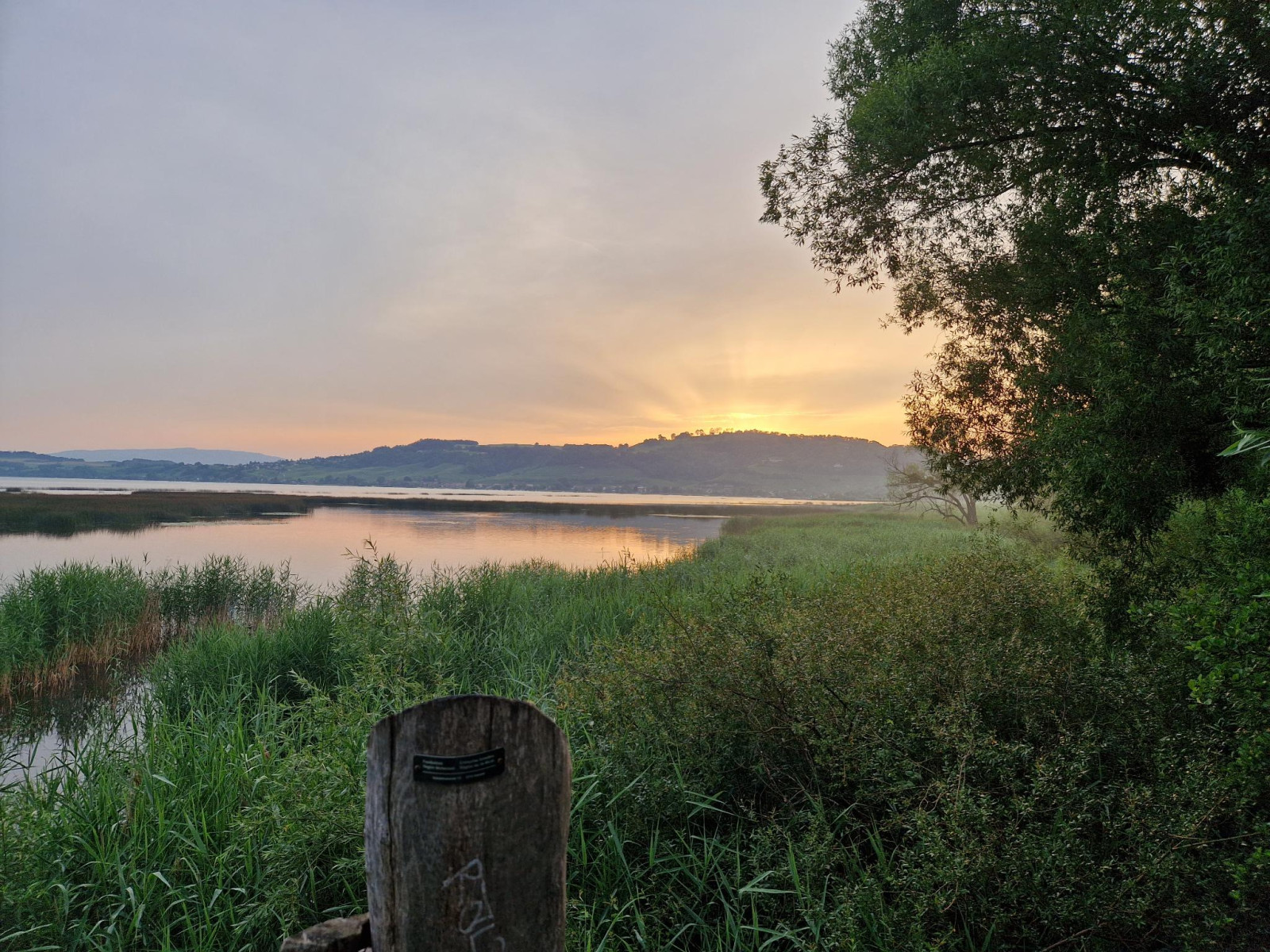Descripción
The Chablais lies between the prominent and ornithologically interesting Mont Vully and the small Löwenberg on the northern shore of Lake Murten. The deciduous forest there is only a hundred years old. It was created by artificially lowering the water level at the end of the 19th century. A wide reedbed extends into the lake, which can be partially observed from platforms.
The beautiful footpath lends itself to practising bird song identification: The view of the reedbed and the lake is often obscured, from where Carricero Tordal, Buscarla Unicolor, and Carricero Común call. Oropéndola Europea, Curruca Mosquitera, and Ruiseñor Común sing in the high treetops and thickets. Pico Menor, Pico Mediano, and Picamaderos Negro also breed here. A view from the platforms is not only rewarded with spectacular sunsets. Rascón Europeo, Martín Pescador Común and, with a bit of luck, Avetorillo común can also be seen. Charrán Común, which breed on the artificial raft at the northern end of the area, often fly past.
In future, it may also be possible to observe the Águila Pescadora more often, which is to be reintroduced to the Central Plateau. Cisne Cantor, Cuchara Común, Silbón Europeo, and Agachadiza común are not uncommon winter visitors. Finally, among the rarities observed here are the Porrón Bastardo, Porrón Acollarado, Cernícalo Patirrojo, Ampelis Europeo, Serreta Chica, and Agachadiza Chica.
Detalles
Accesso
The Le Chablais area can be reached by train either from Sugiez in the north or Muntelier-Löwenberg in the south. If you are coming from Sugiez, it is worth going first to the quay of the Canal de la Broye and looking to the left at the breeding platforms of the Charrán Común. The path through the area that is closest to the water and from which you can reach the observation platforms can only be explored on foot (a cycle path runs parallel to it). Numerous information boards along the way explain the natural area.
Terreno y habitat
Bosque , Humedal , Cañizos , LagoCondiciones
PlanoCamino circular
No¿Se necesita telescopio?
Puede ser útilBuena época para el avistamiento de aves
Todo el añoMejor momento para visitar
PrimaveraRuta
Camino sin asfaltarCamino difícil de andar
FácilAccesible vía
A pieEscondite de observación / plataforma
SíInformación extra
Many mosquitoes breed here at the corresponding times of year. There are fewer of them on the platforms, but it is definitely advisable to take mosquito spray with you on the way.





